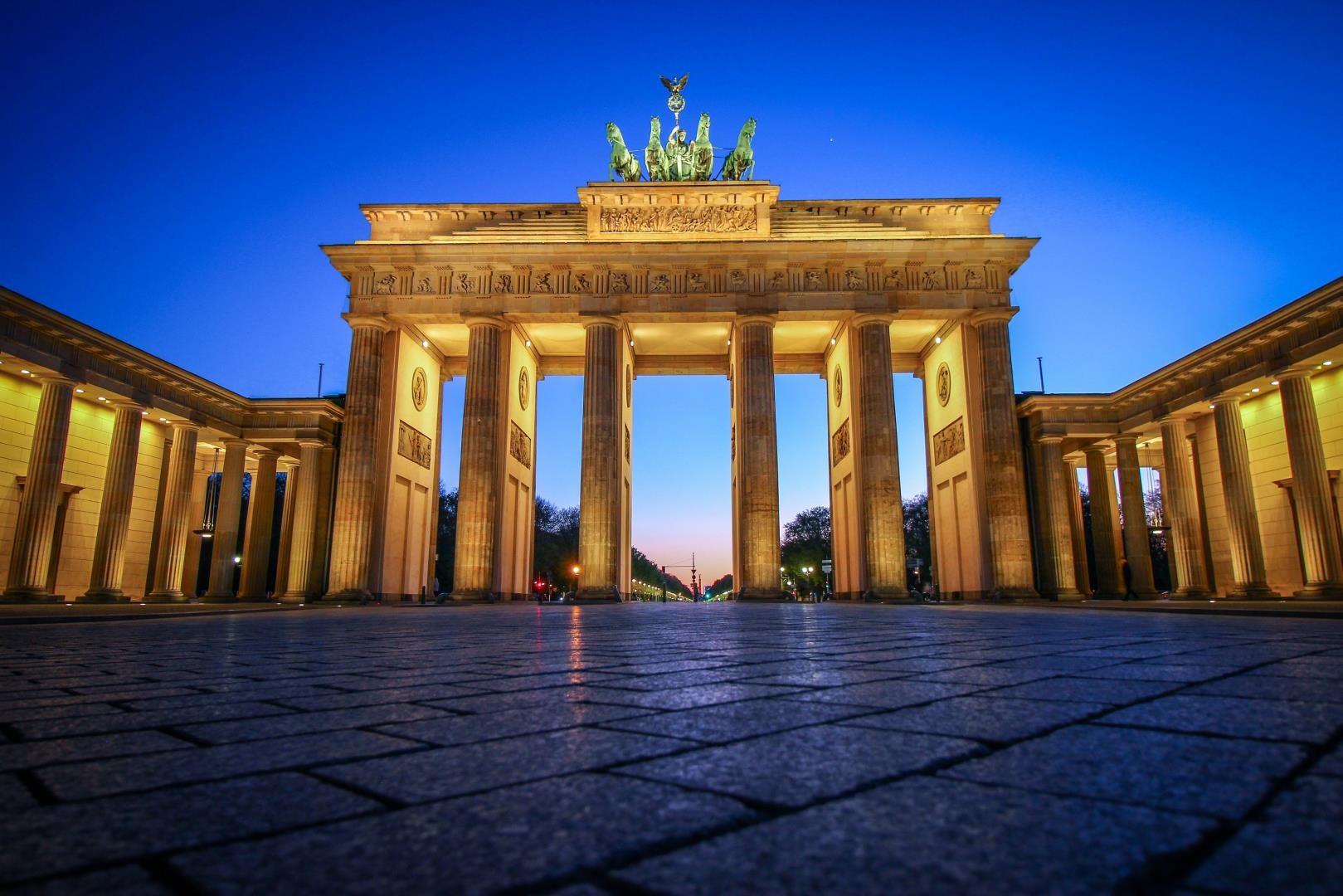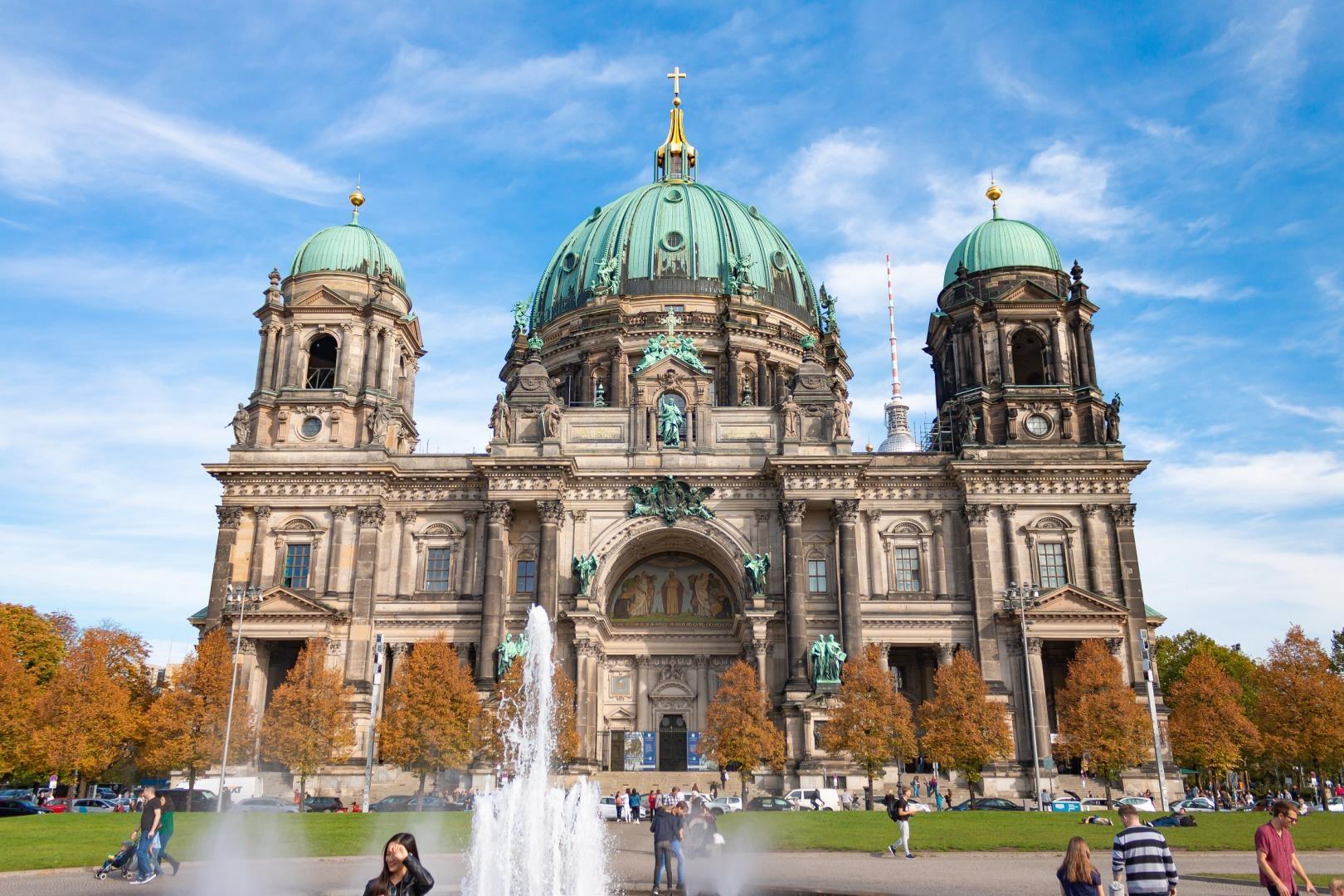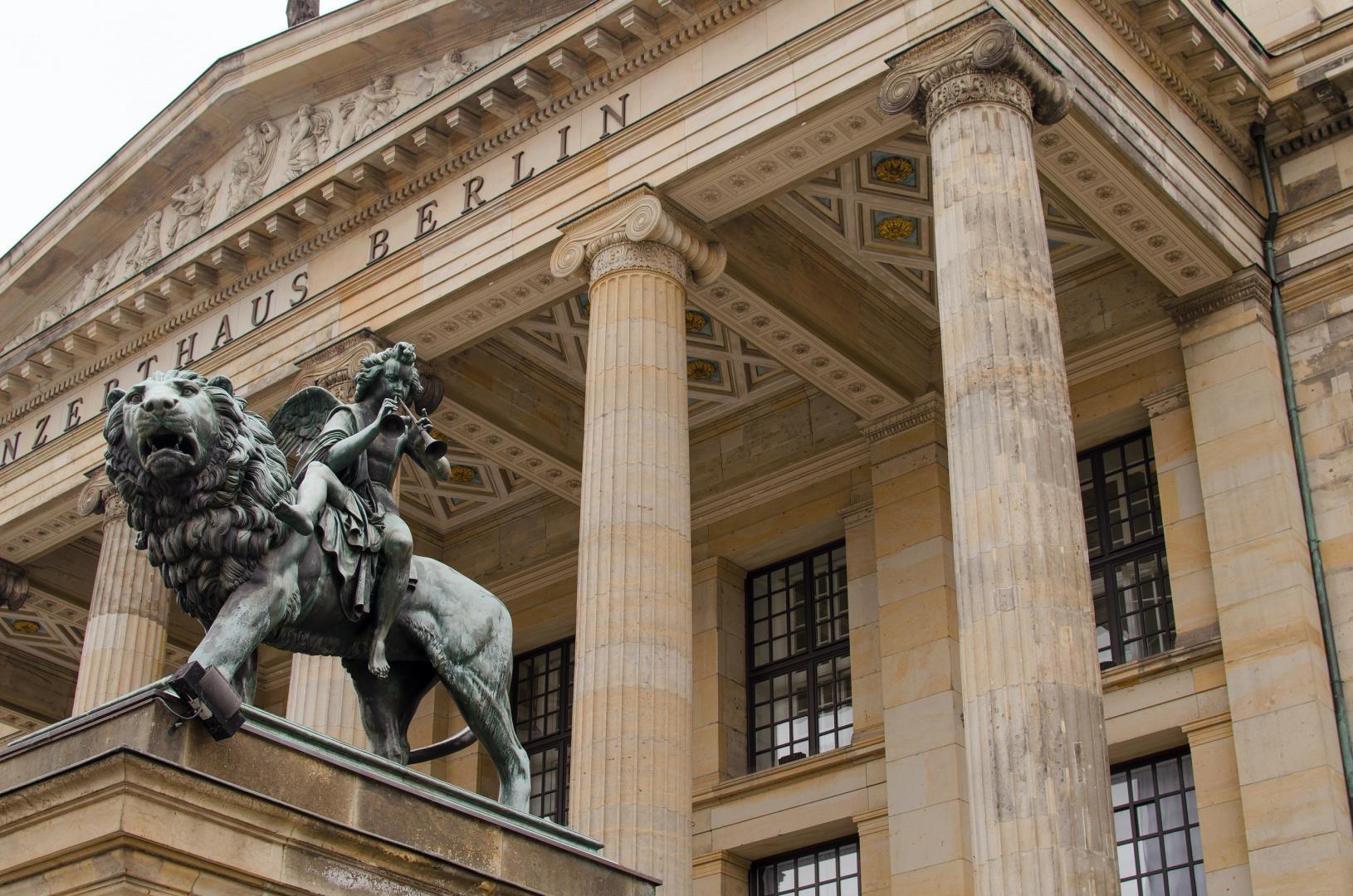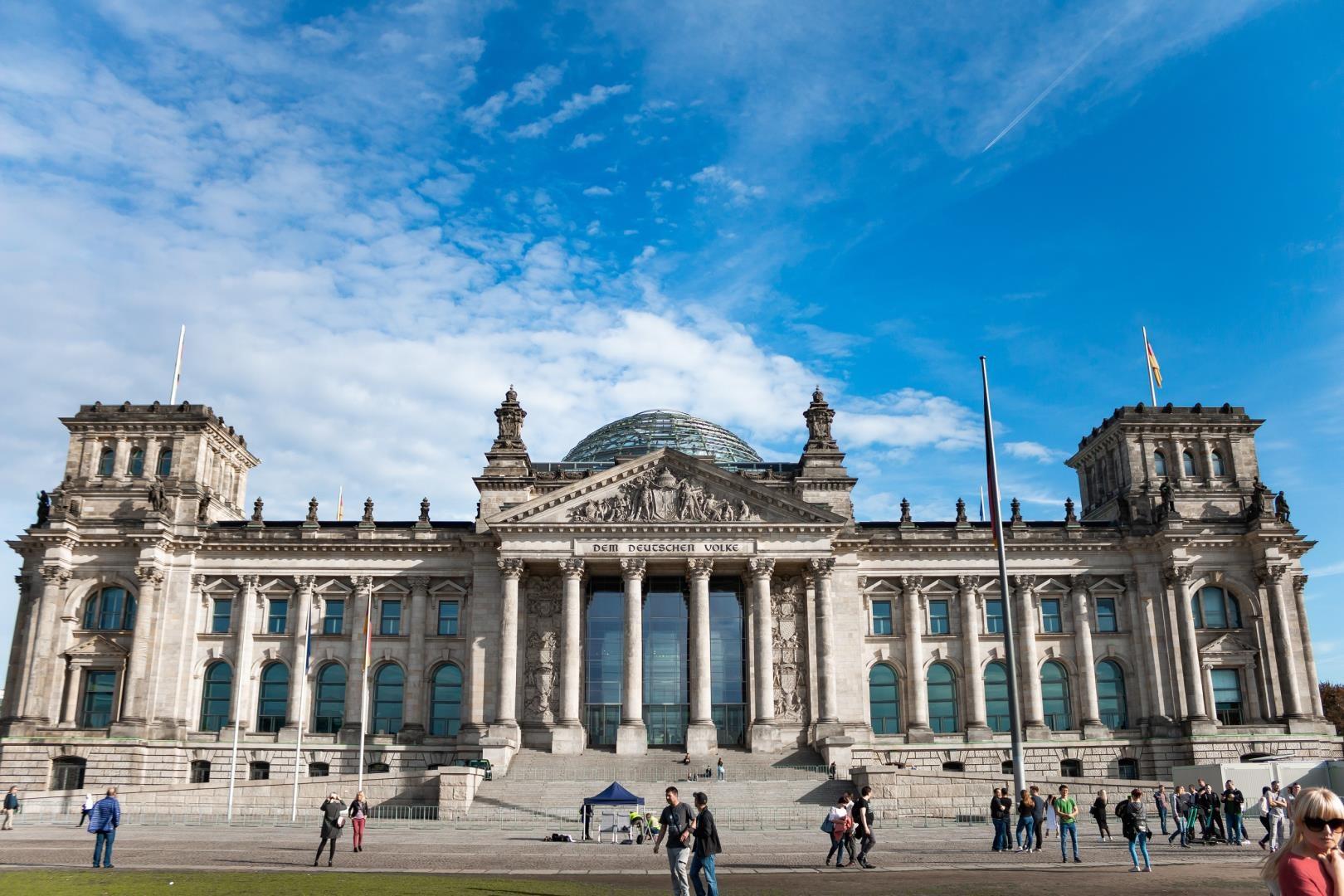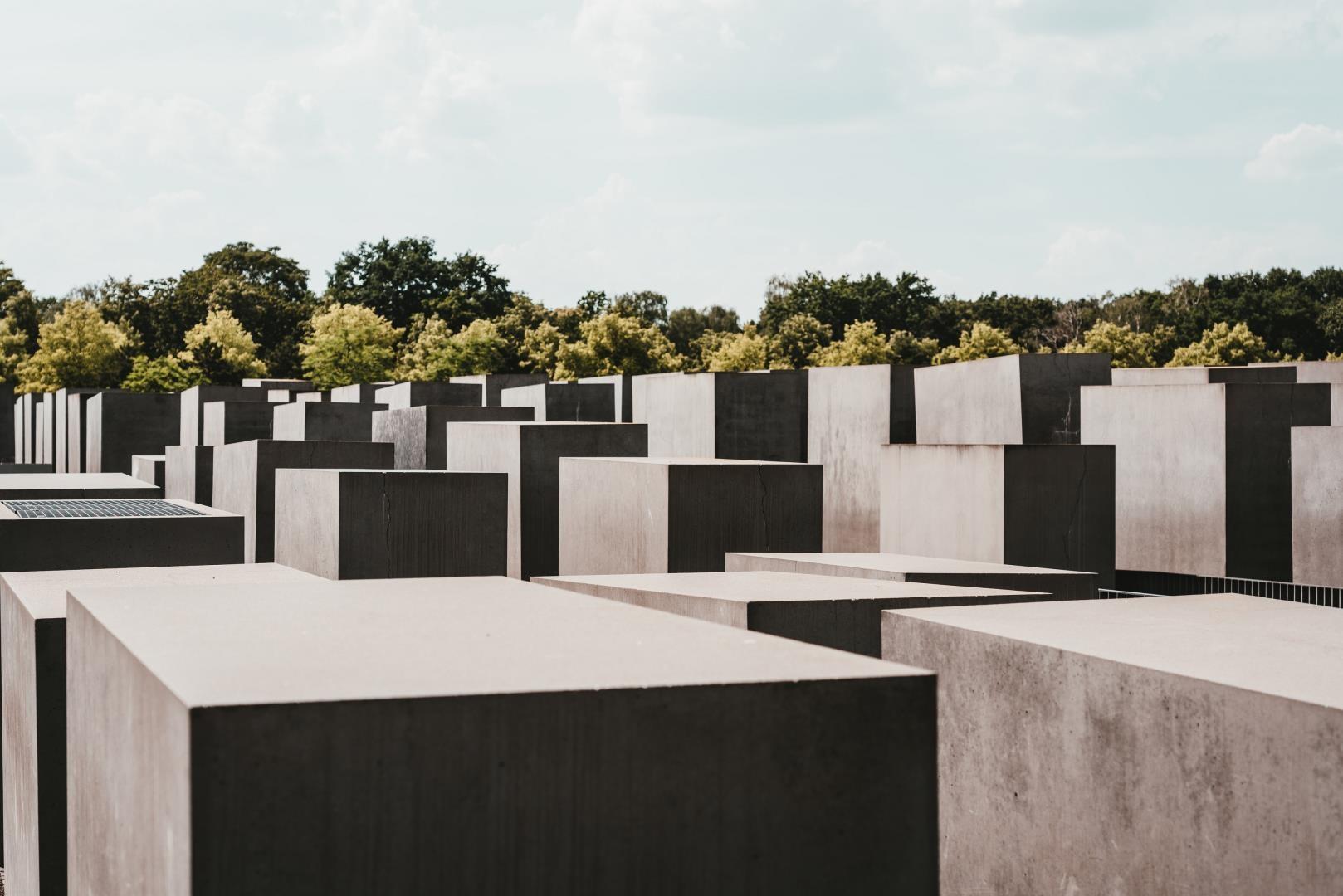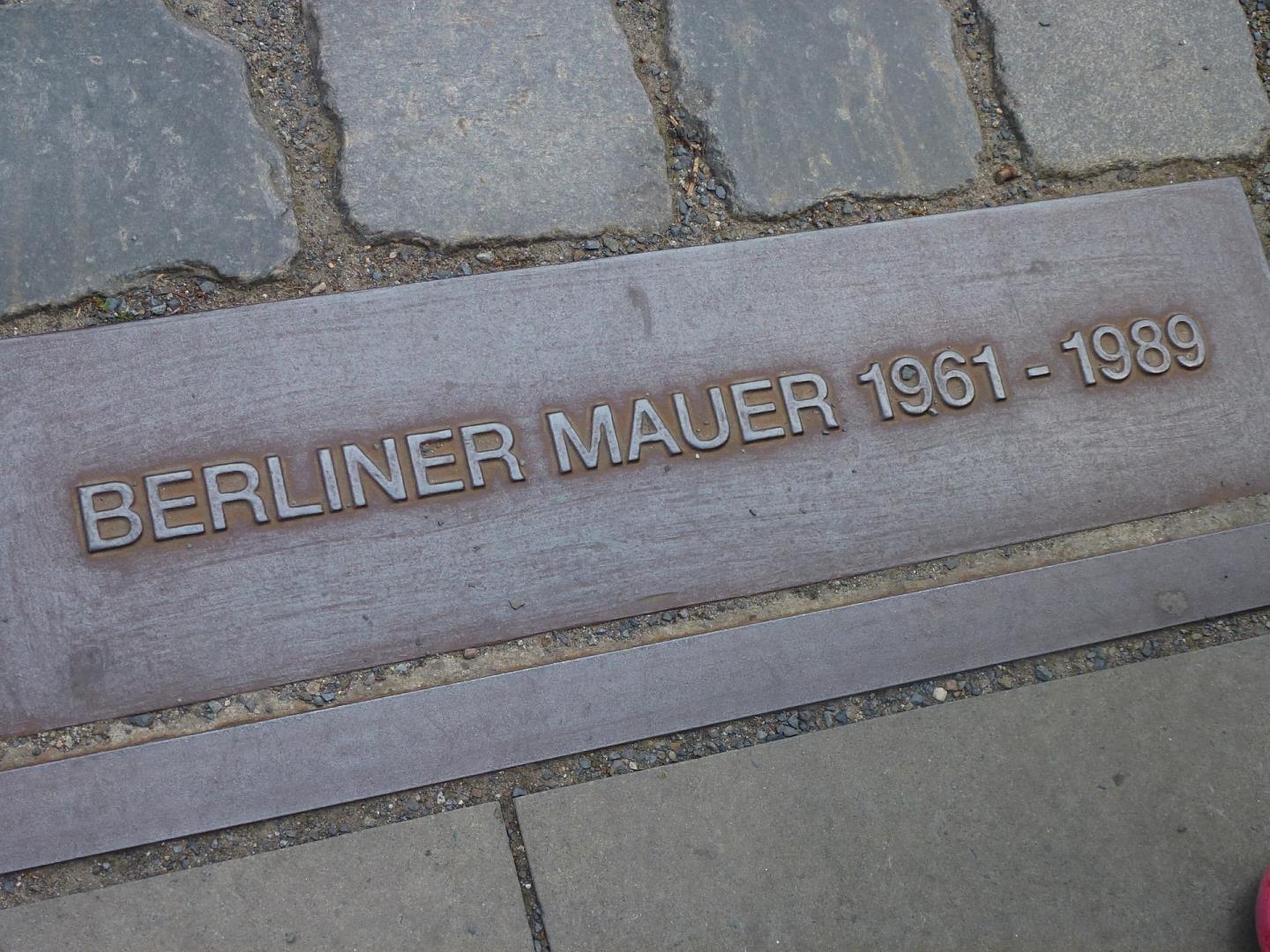Brandenburg Gate
Sitting in the heart of Berlin, Brandenburg Gate is one of the city's most iconic landmarks. This neoclassical gate, made of twelve massive columns topped by a copper quadriga, originates in the 18th century during the reign of Prussian king Frederick William I. Once a symbol of the city's division, particularly during World War II and the Cold War, Brandenburg Gate now epitomizes the unification and peace of Berlin.

Photo Credit: Angelo Abear
Reichstag Building
Once the seat of Imperial Germany, the Reichstag Building is one of Berlin's most historically significant monuments and was once taken by the Nazis in 1933. Following reconstruction in the 1990s, today's Reichstag houses the German Parliament and is one of the country's most popular tourist attractions. Instantly recognizable, the building's massive glass dome shines from atop the Reichstag.

Photo Credit: Angelo Abear
Berliner Dom
Berliner Dom, or Berlin Cathedral, is an exquisite architectural jewel within the heart of the city. Located on Berlin's Museum Island, this cathedral boasts spectacular views of the city and houses an enormous pipe organ.

Photo Credit: Claudio Schwarz
The Holocaust Memorial
The Holocaust Memorial, or Memorial to the Murdered Jews of Europe, is a monument to one of the country's darkest periods and an essential stop for any visitor to Berlin. Memorializing Jewish victims of the Holocaust, this monument is a stark reminder of the loss of life suffered at the hands of the Nazis. Visitors can walk between the overwhelming array of concrete slabs, which represent the millions lost before and during World War II.

Photo Credit: Photoholiday via Pixabay
Memorial of the Berlin Wall
This remnant of the Berlin Wall, which once epitomized the "Iron Curtain" of the Cold War and separated East and West Berlin until 1989, now serves as a reminder of the city's unification.



